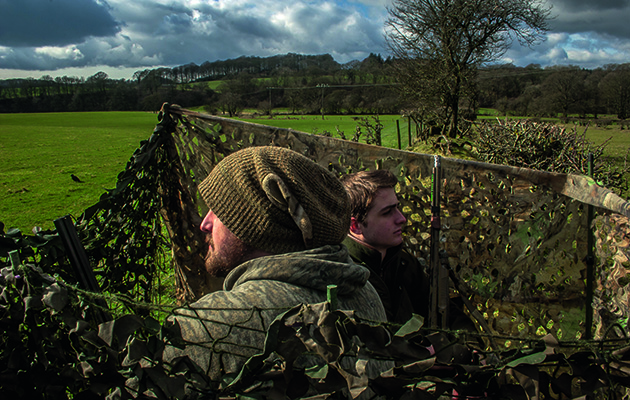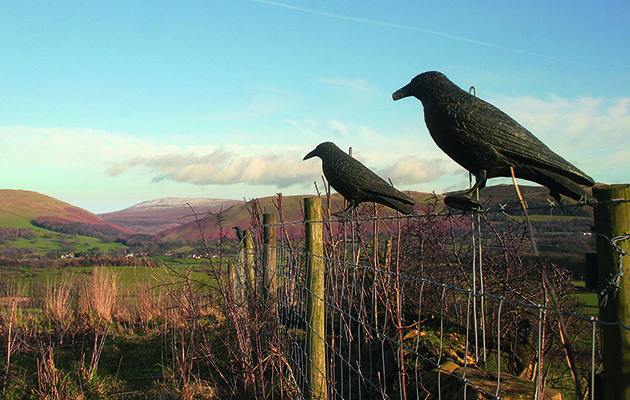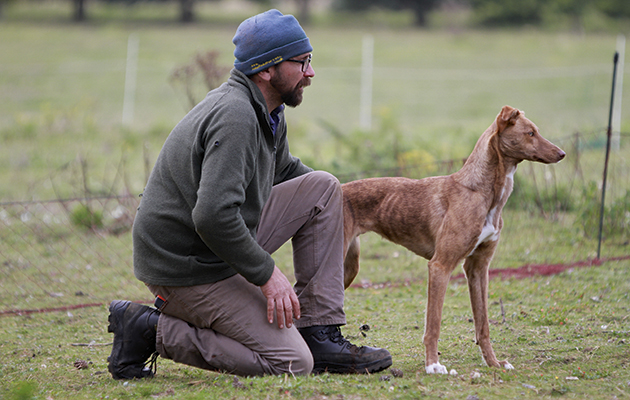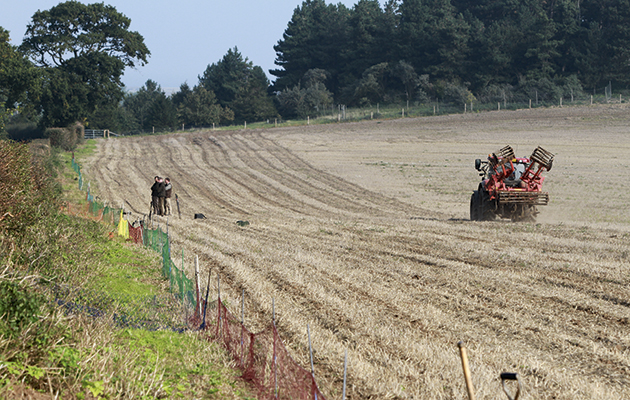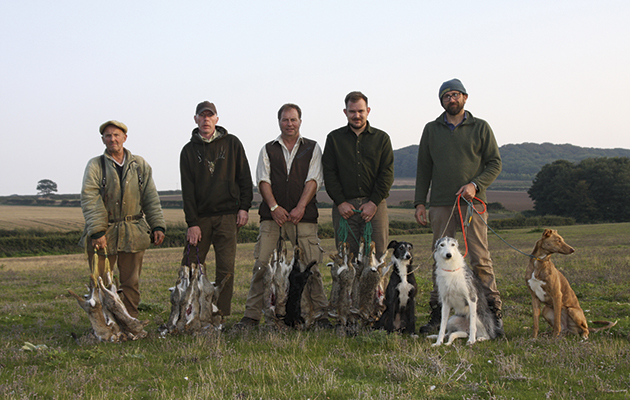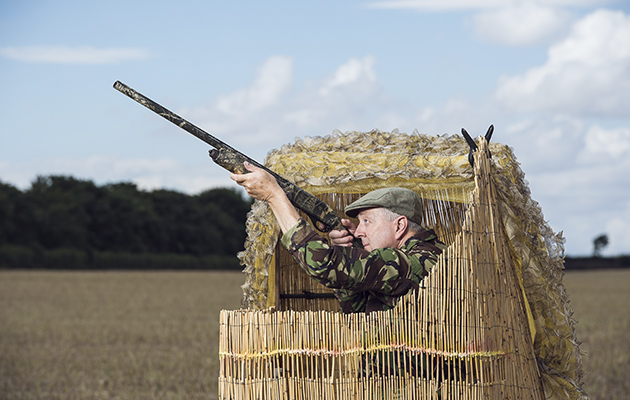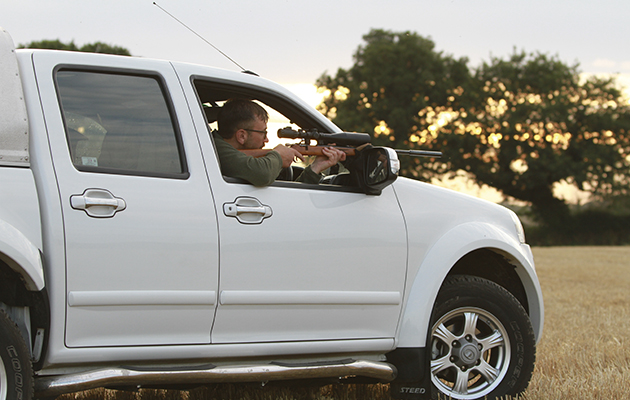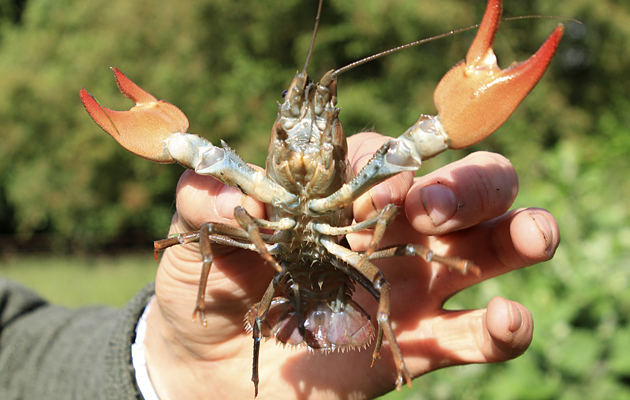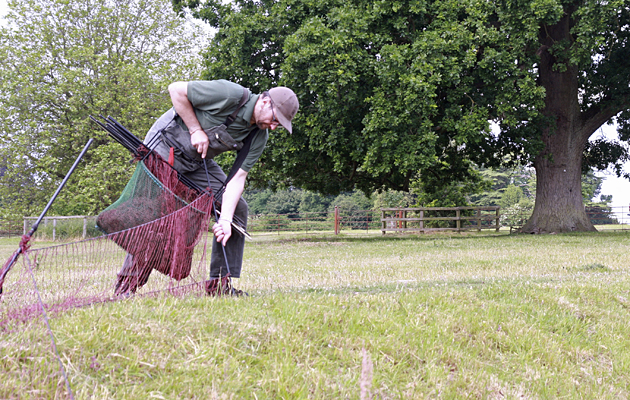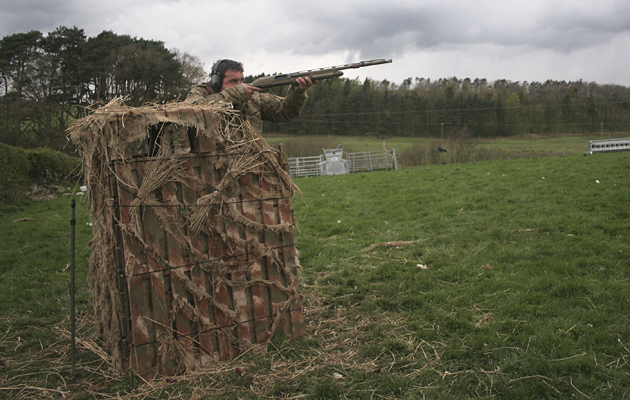Using a Blind for crow decoying
A layout blind is an incredibly versatile bit of kit when it comes to deployment in the field. The blind itself is made from waterproof camouflage sheeting similar to a ground sheet. My blind has a mossy oak shadow grass pattern printed on it, which is a good base colour for a variety of situations. The vegetation straps are used to help blend in to a range of habitats from cut grass to stubble fields. I have used different materials to blend in, from hay, straw and freshly cut grass to hessian and coloured burlap garden twine. This is to break up any unnatural shapes that might make the crows suspect that something is amiss, but it doesn’t have to be perfect by any means, especially when it comes to immature birds.
Most layout blinds have a built-in back. Mine comprises two boards stitched into the fabric, which rest together forming a triangle shape. This lifts the head and shoulders off the ground, increasing my field of view. Although it is relatively comfortable, I often use some form of pillow or padding if shooting for long periods of time, to increase comfort and reduce the risk of back or neck aches.
Camo cream and shades
Depending on the design of the blind, the majority of the body will be concealed. However, some can leave the head and shoulders exposed, so it is important to take precautions to blend in to the surrounding cover with the use of hats and veils. I personally find veils irritating as it prevents me from blowing calls and can become wet with sweat and condensation, so I have been known to use camo cream to good effect to take the shine from my hands and face.
An important bit of kit that I find essential with a layout blind is sunglasses. The long bright summer days can cause issues with your eyes as you spend most of the time looking up in a layout blind. I have even had trouble on some overcast days, so it is important to throw a pair in your kit bag.
The “spot and drop” approach
My layout blind is designed to double as a shoulder bag so that it can be used to carry equipment to the field. This is perfect when I’m doing “spot and drop”- I use this style of shooting when the crows have plenty of fields to choose from or if I only have an hour or so free to go shooting, I like to be able to deploy quickly and efficiently to a field. This technique is also a good way to protect the cover crop drillings as the numerous crops on the estate are sown at the same time so it’s great to be able to chase the crows round and protect a larger area.
Because the blind is a complete unit I don’t have to worry about carrying camo nets, hide poles, seats and so on, I simply leave some natural vegetation on the blind, pick the spot where I wish to set up, tip my dozen decoys out of the blind, unfold the blind, set the decoys up and I’m ready to shoot in a matter of seconds. When I shoot like this, I tend to use full-bodied decoys with feet so they are quick to set up, although they are more susceptible to blowing over in a strong breeze if they aren’t pegged down. Simply scatter the decoys around the blind, which helps take the attention off the shooting position and should pull the crows well in range.
Fool ‘em on mud
Last year, I started using the layout blind on the cover crop drillings. Despite still having some standing crop next to the drillings I decided to test the layout blind on flat featureless mud with old sandy brown-coloured hay in the vegetation traps. I placed my ten full-body crow decoys around the blind as well as on the fence line and waited for the first bit of action. It wasn’t long before the first crows heading up the valley caught sight of the decoys and came in for a closer look. That morning wasn’t the most productive, but it proved that if I can fool ‘em on mud then using it with added cover wouldn’t be too difficult.
Cut grass is easy
My next plan of attack is when the farmers start cutting the grass. As soon as the first field is cut, the crows flock in to feed on the invertebrates exposed in the short grass. I wait until the grass is put into rows and then pick the best spot in the field to lay and wait. This is the advantage with a layout blind, instead of setting up on the hedge and trying to pull birds off a flight line you can take the fight to them and set up shop in the middle of the field.
Cut grass must be one of the easiest places to set up with a blind. The rows of grass provide perfect natural camouflage that’s easy to gather. I set up parallel to a row of grass, or on top of it depending on the depth of the pile. I place the decoys around the blind, normally on top of the rows, to make them visible from a greater distance. It doesn’t take long until the sport begins with cracking snap shots as crows try to land inches from the blind. It is important to make sure that the farmer is aware of your presence, as I will often let the contractors bale the grass around me leaving it until the last minute to move positions before getting swallowed up in the baler. I will move just a few feet away from the previous spot, where the tractors have already baled, and redeploy the blind in the open. The blind is still effective, as I have actually had a farmer come over to see why the contractors have left a section of grass and to shoo the crows, which were actually my decoys.
Stubble for the biggest bags
The real sport starts when I get on to the stubbles. This is when the bird numbers are concentrated on just a handful of fields as not many farmers grow crops in our area. Last year, I had one of the best days sport in a layout blind on a stubble next to a release pen wood. Due to the previous day’s recon I knew where to set the blind up and had taken the time to pre-camouflage it with straw. Before I had chance to get all the decoys out the first crows started to come in, and just kept coming. After three hours of non-stop action, I ended up with a tidy bag of crows for my troubles. Unfortunately not every outing is as productive as that day but the majority of shoots are as exciting. There are no two ways about it, a layout blind will get you closer to the action and produce some great sport, be it with ducks, geese or crows.
Getting the gear
The biggest problem with layout blinds is that they are difficult to find in the uK and due to their large size they can cost a lot to import from the uS. Private sales or eBay can be the best places to find them. However, a similar design to a layout blind could be made at home with the use of a few simple materials such as ground sheets and camo nets. There are many different hats that can be used in a layout blind, but if you want to put that extra bit of effort into camouflage then a boonie hat can be used as it also has vegetation straps.
I use a plastic call when crowing, as these are great for calling jackdaws. Although I use them on carrions and rooks, I will also voice call by shouting “Mark” in a rough voice, which I have found to be one of the best methods of calling.
When choosing camo cream it is important to get a good colour. I have found that the general ex-military face paint is the best way to get a good blend and easier to apply in the field. Most ex-army suppliers will stock it. Crow decoys, boonie hats and crow calls can be found at www.whistlingwings.co.uk.

